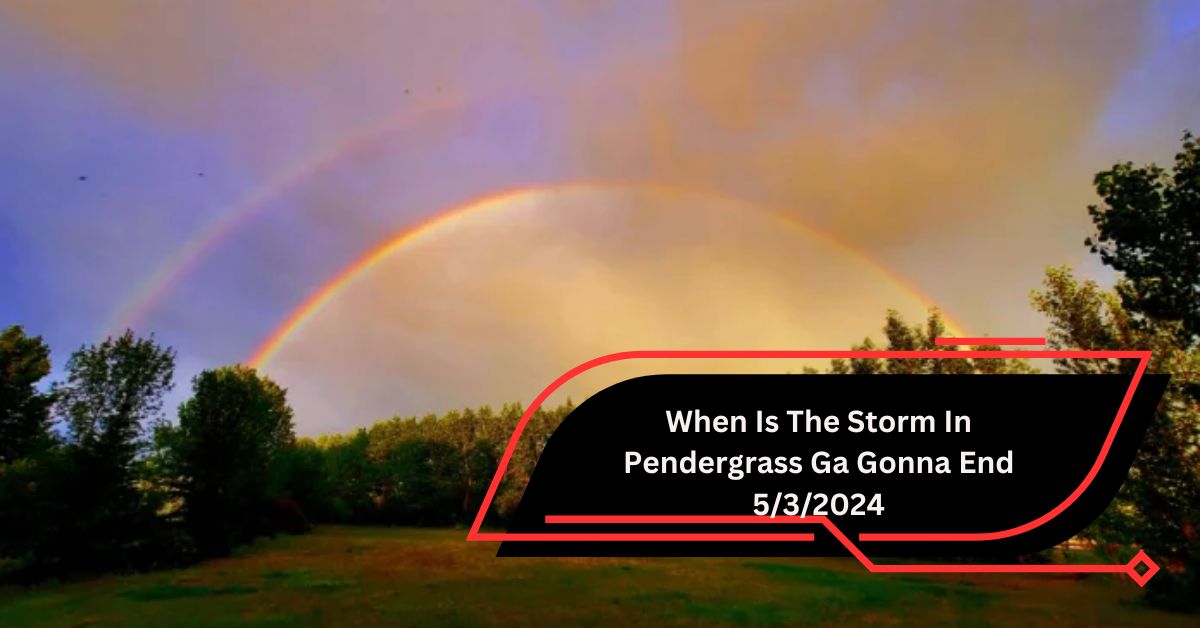If you’re asking “When Is The Storm In Pendergrass Ga Gonna End 5/3/2024”, you’re not alone. Weather can be unpredictable, and staying informed is crucial for your safety and plans.
In this article, we will provide an overview of the storm inWhen Is The Storm In Pendergrass Ga Gonna End 5/3/2024, its expected duration, and helpful tips on how to stay safe during severe weather.
Current Weather Conditions in Pendergrass, GA
As of May 3, 2024, Pendergrass, Georgia, is under the influence of a significant storm system, featuring heavy rainfall, strong winds, and the potential for thunderstorms. The National Weather Service (NWS) has issued various weather warnings and advisories for the area, urging residents to take caution.
What to Expect
- Heavy Rain: Forecasts predict that Pendergrass will receive substantial rainfall throughout the day, leading to potential flash flooding. Rainfall amounts could reach up to 3 inches in some areas.
- Thunderstorms: Thunderstorms are likely, with the possibility of severe weather, including lightning strikes and hail. Thunderstorms can form rapidly, so it’s essential to stay alert.
- Wind Gusts: Winds may reach speeds of 20-30 mph, with gusts even higher during the storm. These strong winds can cause damage to trees, power lines, and structures.
Radar and Alerts
To stay updated, local residents should monitor weather radar and alerts. You can use various apps or visit websites like the National Weather Service or Weather.com for real-time updates.
How Long Will the Storm Last?
Estimated Duration
Based on forecasts from the National Weather Service, the storm in Pendergrass, GA, is expected to persist throughout the day on May 3, 2024. Here’s a rough timeline of what to expect:
- Morning (8 AM – 12 PM): Expect continued rainfall with a high likelihood of thunderstorms. The morning hours are predicted to be the heaviest in terms of precipitation.
- Afternoon (12 PM – 4 PM): The intensity of the rainfall may decrease slightly, but scattered thunderstorms could still occur. The risk of flash flooding will remain elevated during this period.
- Evening (4 PM – 8 PM): As the storm system begins to move out of the area, rain is expected to taper off. Thunderstorms may still occur but should become less frequent.
- Night (After 8 PM): Conditions are forecasted to improve significantly, leading to a calmer night with clearing skies.
Monitoring Updates
Weather conditions can change rapidly, making it vital to keep an eye on local updates through reliable sources such as the NWS or local news stations. It’s advisable to set up alerts on your smartphone to receive notifications about weather changes in real-time.
Safety Tips During a Storm
While waiting for the storm to pass, here are some essential safety tips to keep in mind:
- Stay Indoors: The safest place to be during a storm is indoors. Avoid unnecessary travel and stay away from windows.
- Secure Loose Items: Bring in any outdoor furniture, decorations, or garden tools that could become dangerous projectiles in strong winds.
- Stay Informed: Ensure you have a reliable source of weather updates. Keep your phone charged and listen to alerts via weather apps or local news.
- Prepare for Power Outages: Have a flashlight, batteries, and a backup power source available in case of a power outage. Charge your devices beforehand.
- Avoid Driving: If possible, stay off the roads during severe weather. Heavy rain can create hazardous driving conditions, including reduced visibility and flooding.
- Emergency Kit: Prepare an emergency kit with essential supplies such as non-perishable food, water, medications, and a first aid kit. This kit will help you stay prepared in case of an extended power outage or evacuation.
FAQs
1. What should I do if I lose power during the storm?
If you lose power, first, ensure that all your appliances are turned off to avoid damage when the power returns. Use flashlights instead of candles to prevent fire hazards. Stay tuned to battery-operated radios or weather apps for updates.
2. How can I tell if my area is at risk for flooding?
The National Weather Service will issue flood alerts for areas at risk. You can also check local news reports or weather apps for updates. Look for signs of rising water in your area and be aware of any flash flood warnings.
3. Are there shelters available if I need to evacuate?
Yes, local authorities usually establish emergency shelters during severe weather. Check with your local government or the American Red Cross for information on available shelters in your area.
4. What should I include in my emergency kit?
Your emergency kit should include the following items:
- Water (one gallon per person per day for at least three days)
- Non-perishable food (at least a three-day supply)
- Battery-powered or hand-crank radio
- Flashlight and extra batteries
- First aid kit
- Whistle to signal for help
- Dust mask to help filter contaminated air
- Personal sanitation supplies
5. How can I stay informed about the storm’s progress?
To stay informed, use reliable sources such as the National Weather Service, local news websites, and weather apps. You can also follow social media accounts of local meteorologists for real-time updates.
Conclusion
As of May 3, 2024, Pendergrass, GA, is experiencing significant storm activity, with expectations of improvement later in the evening. Keeping informed and prioritizing safety during this time is crucial. Monitor weather updates, prepare your emergency kit, and follow safety precautions.
Stay safe, and let’s hope for clearer skies ahead!





